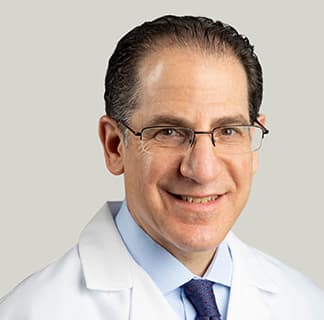What is aortic dissection: What you need to know about the causes, types and more

After years of treating patients with aortic dissections, I routinely get questions about the signs and symptoms associated with an aortic dissections, how to prevent aortic dissections and what treats are available. I wanted to take the time to answer those common queries so people would have a better understanding of aortic dissections.
What is aortic dissection?
More than 13,000 people die from an aortic dissection each year in the United States. An aortic dissection begins as a tear in the aortic wall, so the main artery in the body is splitting. If the dissection is not treated immediately, the tear can continue to worsen, ripping the outer layer of the aorta and allowing blood to escape the artery. The loss of blood flow caused by a leaky aorta means there’s less oxygen for vital organs like the brain, kidneys and even the heart, which can be deadly. As many as 40 percent of people who suffer from an aortic dissection die almost instantly, and the risk of death increases by 3-4 percent every hour the condition is left untreated.
What are the types of aortic dissection?
There are two types of aortic dissection: Type A and Type B.
Type A Aortic Dissection
Type A dissections begin in the ascending aorta (the upper aorta) and require immediate treatment because the complications of an acute aortic dissection are life threatening. The most common concerns of a Type A dissection are heart attacks due to injury to the coronary arteries from the dissection; acute failure of the aortic valve due to the tear, which prevents blood from being pumped from the heart correctly; and rupture that causes the sac that surrounds the heart to fill with blood.
At the UChicago Medicine, heart surgeons specialize in repairing Type A dissections.
Type B Aortic Dissection
With Type B aortic dissections, a tear occurs in the lower aorta, after the main arteries to the brain and arms. Because Type B can be equally fatal if not treated quickly, the aortic dissection is treated by expert UChicago Medicine vascular surgeons who repair the damaged blood vessels. The first step of care is making sure the patient's blood pressure is controlled, and if surgery is required, the dissection is more commonly repaired with a stent.
How to recognize aortic dissection symptoms?
Recognizing an aortic dissection can be difficult because the symptoms can be confused with a heart attack or pulmonary embolism (a blockage in the lung). The primary sign that you could have a dissection is pain. Once the aortic tear begins, you will typically feel severe pain almost instantaneously. The most common symptoms include:
- Tearing back pain
- Chest pain
- Abdominal/stomach pain
- Difficulty breathing
- Limb weakness (typically in arms and legs)
- Intense sweating and paleness
If you experience excruciating pain, go to an emergency department immediately for treatment.
What causes aortic dissection?
We find that patients with poorly controlled blood pressure are at most risk for aortic dissection. Additionally, those with pre-exciting connective tissue diseases, such as Marfan’s syndrome, Ehlers-Danlos syndrome and other collagen vascular disorders, are also at high risk for aortic tears.
Other common risk factors include an existing aneurysm, polycystic kidney diseases or even chest trauma that can lead to an aortic dissection.
Can aortic dissection be prevented?
The best way to prevent an aortic dissection is making sure your blood pressure is well under control. It is important to comply with all medical therapy to maintain a healthy blood pressure long term. This will protect your aorta from complications that could leave to serious consequences.

Ross Milner, MD
Ross Milner, MD, is an internationally recognized expert in vascular surgery. He specializes in the treatment of complex aortic diseases.
Learn more about Dr. Milner
Center for Aortic Diseases
For over 100 years, the world-renowned clinicians and scientists at the University of Chicago Medicine have specialized in the diagnosis, care and management of all types of aortic conditions.
Explore our aortic disease services